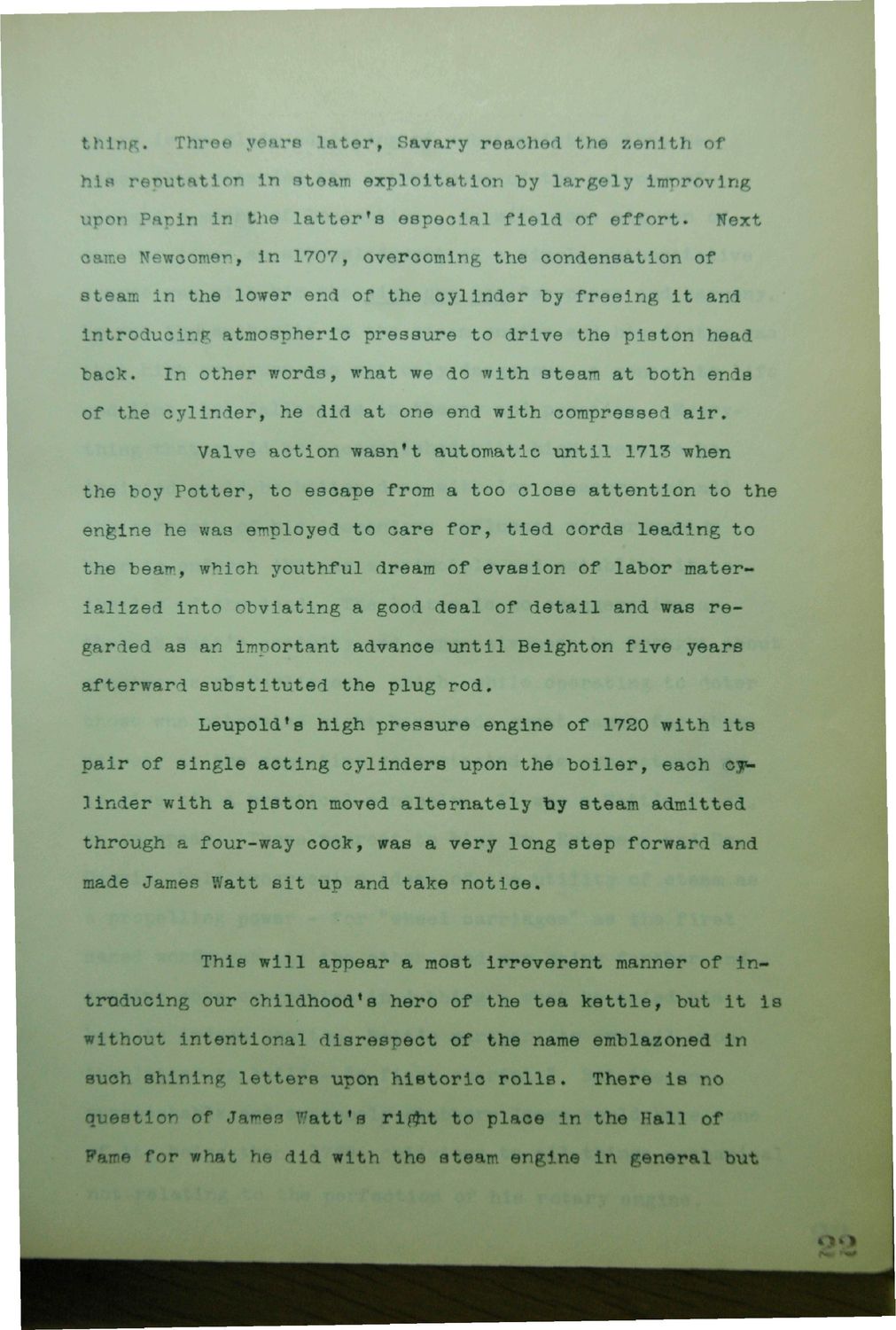Caption: Dedication - Transportation Building Dedication Addresses
This is a reduced-resolution page image for fast online browsing.

EXTRACTED TEXT FROM PAGE:
thing. Three years later, Savary reached the zenith of hia reputation in steam exploitation by largely improving upon Papin in the latterfs especial field of effort. Next came Newcomen, in 1707, overcoming the condensation of steam in the lower end of the oylinder by freeing it and Introducing atmospheric pressure to drive the piston head back. In other words, what we do with steam at both ends of the cylinder, he did at one end with compressed air. Valve action wasn't automatic until 1713 when the boy Potter, to escape from a too close attention to the engine he was employed to care for, tied cords leading to the beam, which youthful dream of evasion of labor materialized into obviating a good deal of detail and was regarded as an important advance until Beighton five years afterward substituted the plug rod, Leupold's high pressure engine of 1720 with its pair of single acting cylinders upon the boiler, each <ey» Under with a piston moved alternately by steam admitted through a four-way cock, was a very long step forward and made James Watt sit up and take notice. This will appear a most irreverent manner of introducing our childhood's hero of the tea kettle, but it is without intentional disrespect of the name emblazoned in such shining letters upon historic rolls* There is no question of James Watt's ripjit to plaoe in the Hall of Fame for what he did with the steam engine in general but
|